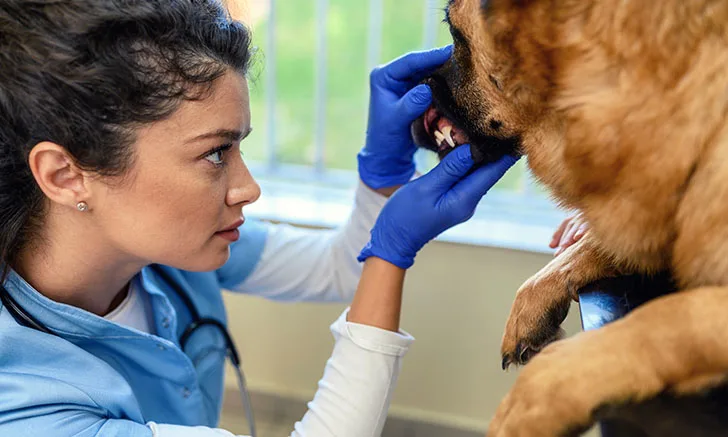Top 5 Pitfalls of Dental Extractions & How to Avoid Them

Sponsored iM3
The widespread prevalence of periodontal disease in the pet population has made dental extractions a common procedure in general practice.1,2 However, dental extractions are highly technical, multistep procedures, leaving opportunity for complications to arise.1,3,4 Recognizing the most likely mishaps and their causes is an important step in preventing complications.
1. Fractured & Retained Roots
Fractured and retained roots are the most common complication of dental extractions,1,3 with 1 study finding retained roots in as many as 86% of carnassial extractions in dogs and cats.4 Retained roots may lead to chronic pain, inflammation, and infection.1,3-6
Although fracturing tooth roots in the process of extraction may be unavoidable in cases of significant disease, patience and strict adherence to extraction best practices from start to finish can help reduce the likelihood of a frustrating fracture:1,3,5,6
Pre-extraction radiography should always be performed to screen for ankylosis, resorption, curvature, and/or other disease that may increase the risk for root fracture.1,3,6
Before any elevation is attempted, the periodontal ligament should be cut with a blade or elevator and multirooted teeth sectioned with a high-speed, air-driven handpiece; when appropriate, a mucogingival flap should also be created and alveolar bone removed with carbide bur.1,5
During elevation, sudden, intense force should be avoided; the periodontal ligament should be gradually fatigued by holding a small amount of pressure over longer times (10-30 seconds).1,5Extraction forceps should only be used once the tooth is loose enough to be easily removed.1
Lastly, postextraction radiography should be performed to confirm that no root fragments are left behind.1
2. Suture Dehiscence & Oronasal Fistula Formation
Incision tension and aggressive tissue handling can lead to poor healing and dehiscence of the mucogingival flap.1,5,6 Tension can be eliminated with periosteal releasing incisions that allow the flap to stay in place when laid over the closure.1,6 To prevent oronasal fistula formation, all maxillary canine extractions should be closed, even when tooth removal is simple.5 An iM3 diamond bur can also be used to debride intact epithelial tissue and create a healthy recipient bed for an oronasal fistula flap.6
3. Root Tip Displacement
Fractured root tips can be accidentally pushed into the nasal cavity or mandibular canal, both locations from which the root tip is extremely difficult to retrieve and requires referral to a specialist,5,6 as displaced root tips can lead to pain and infection.7 Because this sequela is more likely if significant disease and bone loss is present around the root tip, preoperative radiography can help assess risk for displacement.5 When a fractured root is extracted, radiography may also help assess root tip location and instrument placement to avoid applying undue pressure on the root.7 Likewise, adequate exposure of the root tip may allow for better visualization and instrument positioning.5
4. Jaw Fracture
Iatrogenic jaw fracture is most commonly associated with mandibular canine and mandibular first molar teeth, which have apexes that reach close to the ventral cortex of the mandible.5,6 Disease of these teeth can cause significant mandibular bone loss, which increases the risk for fracture.5,6 Small-breed dogs are especially high-risk due to their relatively large first molar size relative to the width of their mandible.5
To avoid iatrogenic jaw fracture, high-risk patients with significant mandibular bone loss should be referred to a board-certified veterinary dentist.6 Preoperative radiography is imperative to identifying these patients prior to the start of extractions.
5. Hemorrhage
Although some bleeding is expected from the highly vascular and typically inflamed tissues of the oral cavity, significant hemorrhage can occur from damage to one of the larger blood vessels (ie, infraorbital artery, middle mental artery, inferior alveolar artery, major palatine artery, incisive artery).5,6 Anatomic knowledge of these arteries is necessary to avoiding damaging them during mucogingival flap formation and bone removal.5,6 In addition, holding elevators with a finger placed near the tip can help prevent slippage of the instrument and trauma to nearby tissue.1
Conclusion
Dental extractions are technically challenging procedures that can result in a variety of complications. With the right tools, knowledge, and experience, the risk for extraction complications may be greatly minimized.
